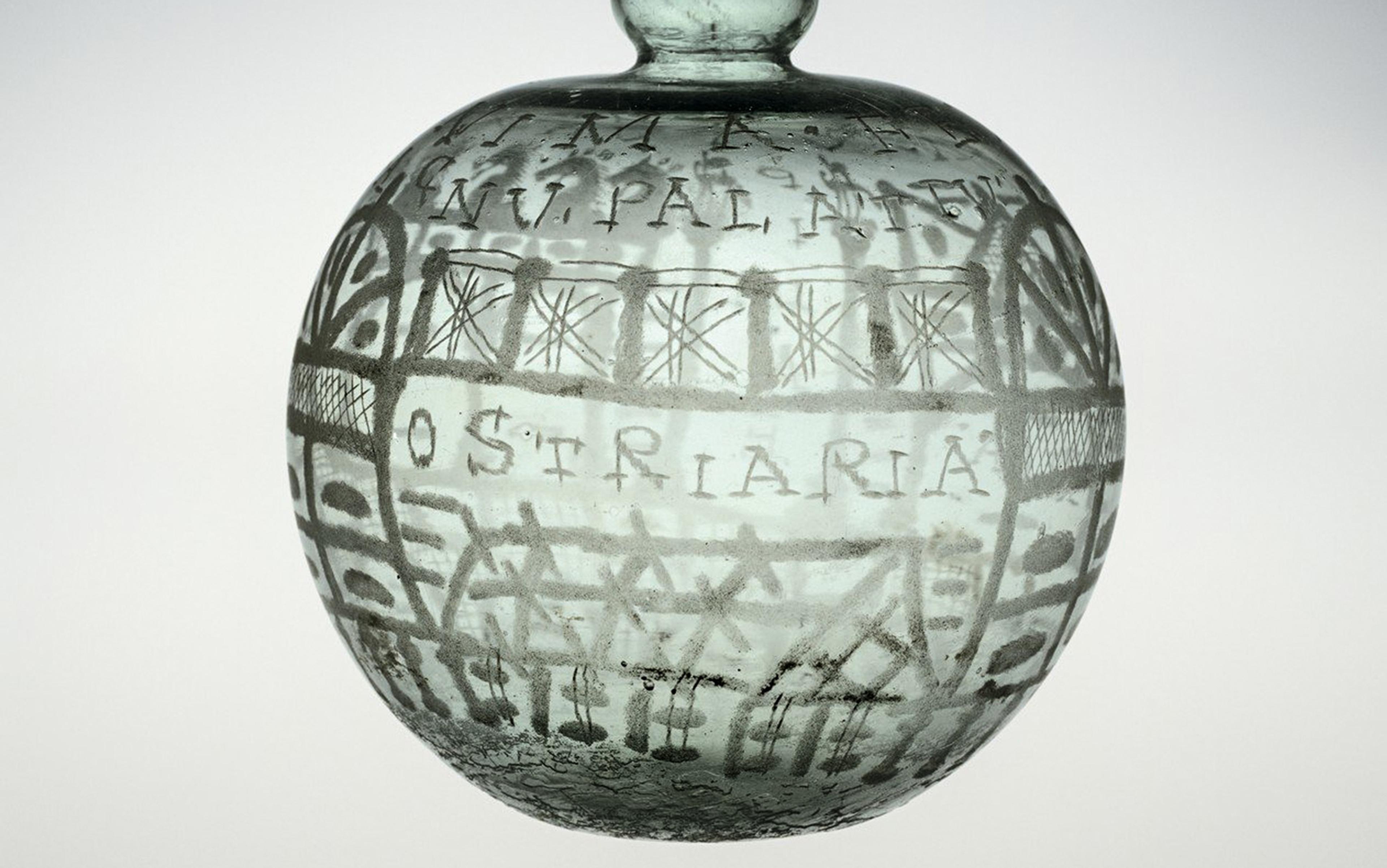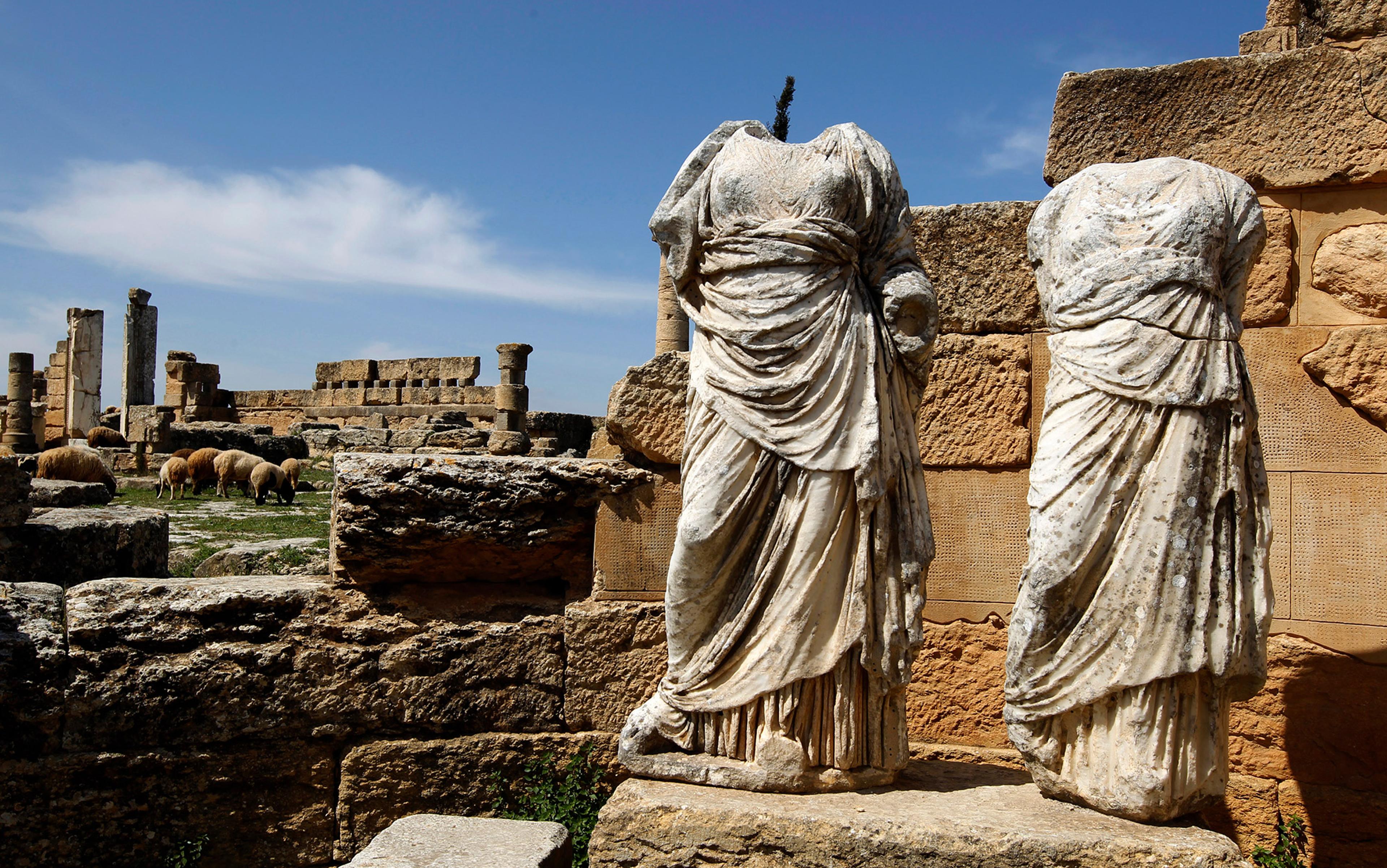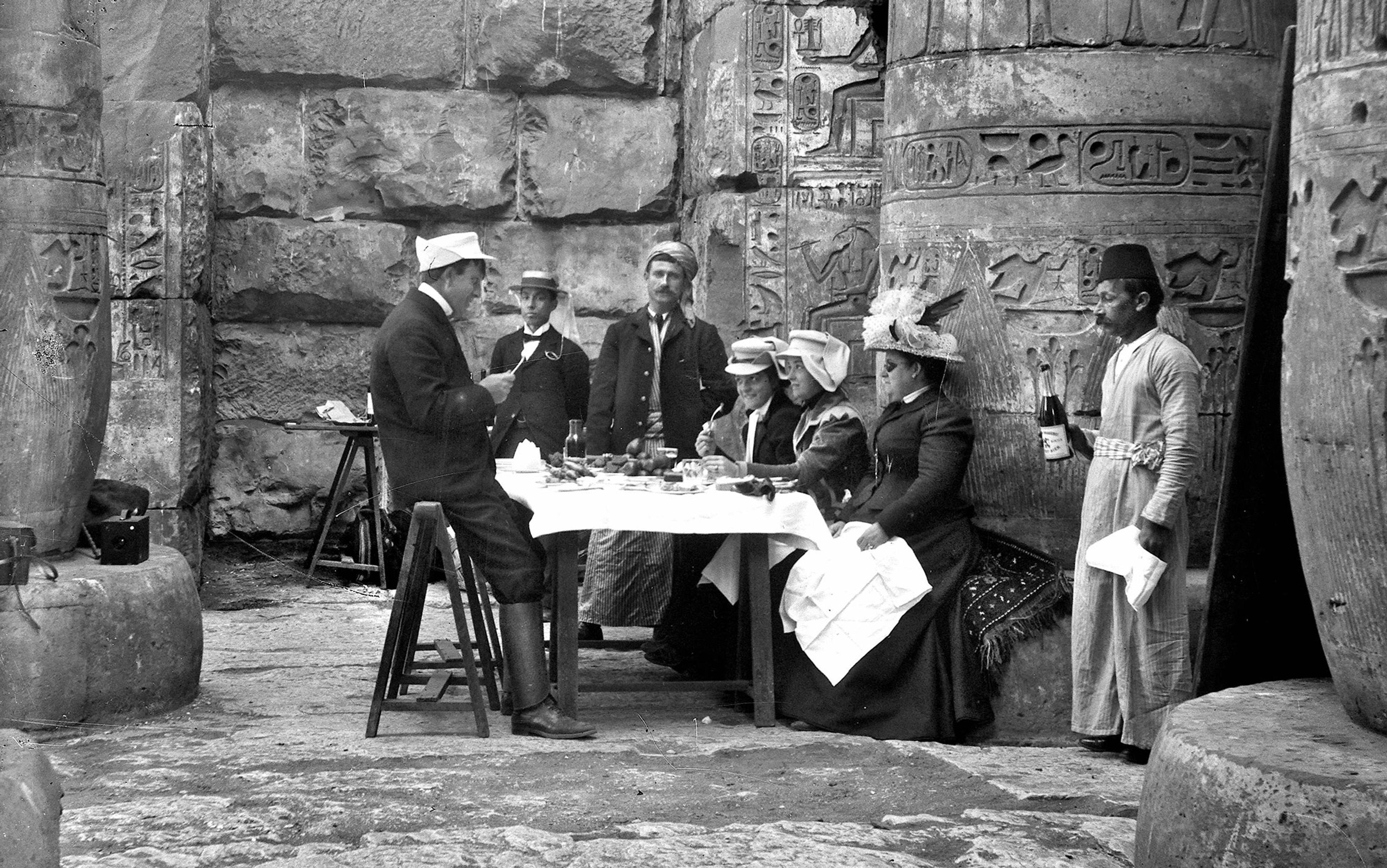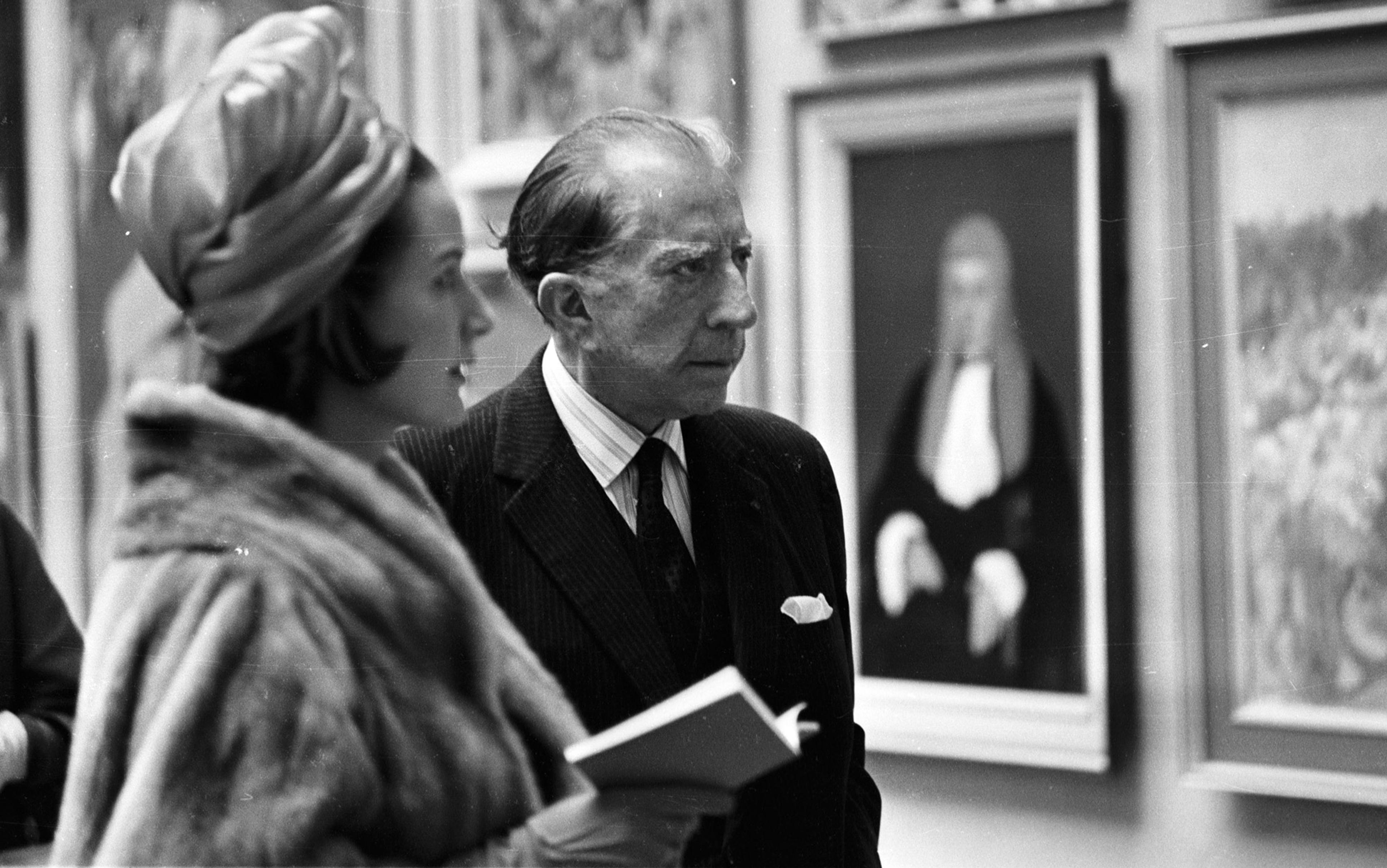Souvenirs, an omnipresent facet of modern tourism, trace their roots to the ancient Mediterranean. In the Roman Empire, the common languages of Greek (koine) and Latin, standardised coinage and centralised bureaucracy increased the ease of travel, all of which helped a culture of souvenirs flourish. Indeed, a broad range of souvenirs commemorating places emerges from the archaeological record. These are not just trivial mementoes. Souvenirs then and now offer a remarkable window on how people develop shared visions of places, how they conceive of such foundational ideas as authenticity, and how we create emotionally meaningful personal relationships. Souvenirs perform vital work in shaping how people come to know their world and its landmarks. By taking ancient souvenirs seriously, we can glimpse how Romans themselves understood their empire and its cultural heritage.
In the Roman Empire, which lacked a print culture, let alone digital media, souvenirs were crucial in disseminating knowledge of places, be they cities, monuments, buildings or statues. For people who could not travel to such sites in person – which included the majority of the empire’s inhabitants – reproductions were a key means for visualising their physical appearance and cultural significance. Some of the most famous statues of the Greek world – masterpieces such as Athena Parthenos by Phidias, Aphrodite of Knidos by Praxiteles, and Tyche of Antioch by Eutychides – spawned veritable souvenir industries, not just at the sites where these cult statues stood but also, in some cases, elsewhere. Craftspeople churned out miniature reproductions that brought these statues before the eyes of people who would otherwise never see them. In fact, we too are among those who will never see the original statues made by the vaunted hands of Phidias, Praxiteles and Eutychides since these works do not survive. What we do have, however, are replicas – not only the large-scale marble copies that populate the pages of art history textbooks, but also, and much more numerous, souvenirs.
Given the epistemological significance of souvenirs, both in antiquity and in art history, why are we so quick to dismiss souvenirs as objects of serious enquiry?
In part, scholarly devaluation of ancient souvenirs stems from the longstanding dominance of Kopienkritik in the study of Greco-Roman art. Kopienkritik – the methodology of reconstructing lost Greek sculptures by assuming that Roman sculptures copy them reasonably faithfully – traces its origins back to the enormously influential work of the 18th-century German art historian Johann Joachim Winckelmann, who viewed Classical Greek art as the aesthetic pinnacle of ancient art (although, ironically, many of the ‘Greek’ statues he so admired were actually later Roman replicas). It became entrenched in studies of Greco-Roman sculpture in the late 19th century by the German archaeologist and art historian Adolf Furtwängler. Kopienkritik valorises Roman statues insofar as they offer insight into a Greek predecessor, and it often fails to contextualise Roman artworks in their own historical and cultural milieux. It crystallises a desire to uncover lost ‘originals’ that has obscured the import of reproductions, numerous among which were ancient Roman souvenirs.
Take, for example, the Tyche of Antioch, the life-size bronze statue created by the sculptor Eutychides (a student of Lysippos, Alexander the Great’s court artist) to commemorate the founding of the city of Syrian Antioch (modern Antakya, Turkey) in 300 BCE. This statue, which came to personify Antioch, represented the goddess Tyche, or Fortune, as a heavily draped figure wearing a mural crown, seated upon a rock, with the male torso of the personified River Orontes rising from below her feet.
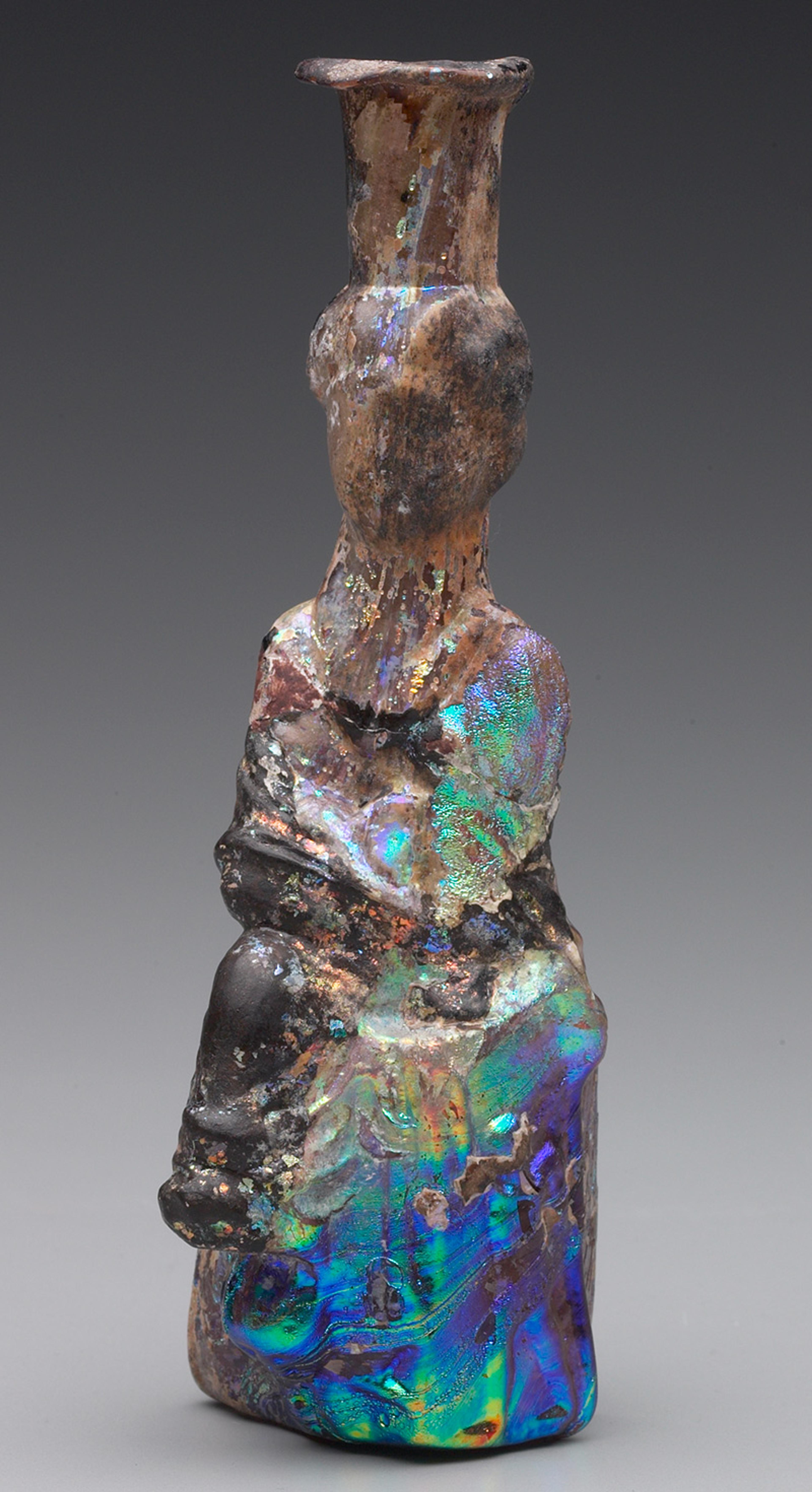
A perfume bottle in the form of Tyche (c2nd-3rd centuries CE). Courtesy the Yale University Art Gallery
Most people in the Roman Empire would never have seen Eutychides’ statue in person in Antioch. Little matter, though, for the statue was reproduced in various souvenirs that circulated in the Roman Empire, including glass perfume bottles in the form of the Tyche, manufactured and sold locally in Syria, and a series of miniature bronze replicas produced and marketed farther afield in the empire’s western provinces. The glass bottles assume the characteristic form of the seated Tyche, with the bottle’s neck taking the place of the crown. The bronze figurines maintain the medium of Eutychides’ statue but, like the bottles, omit the torso of Orontes, which evidently was not required to recognise the statue.
Our ideas about authenticity would have puzzled ancient Romans
Other famous statues, such as Phidias’ gold and ivory statue of Athena in the Parthenon and Praxiteles’ statue of Aphrodite in her temple at Knidos, Turkey, also entered people’s lived experience through souvenir reproductions. At Athens, one could buy commemorative plaques and lamps of the Athena Parthenos, and even miniature terracotta replicas of the statue’s famous shield. At Knidos, the town’s potters sold souvenirs of Praxiteles’ notoriously naked statue of the goddess of love. The cult statues of Tyche, Athena and Aphrodite remained immobile in their temples and shrines, but people around the Roman Empire could see and touch them because their images travelled via oil lamps, plaques, figurines and perfume bottles.
Today, we tend to look at a bronze figurine of the Tyche of Antioch or a plaque of the Athena Parthenos and ask how it can help us reconstruct the lost ‘original’; in other words, we adopt a Kopienkritik mindset. Approaching ancient objects as documents of originals, however, is antithetical to how Romans themselves conceived of originality. Our ideas about authenticity would have puzzled ancient Romans, who cared little about distinctions between (supposedly authentic) originals and (somehow less worthy) copies. An ancient Roman could never own Phidias’ Athena Parthenos: that statue belonged to Athens and, ultimately, the goddess herself. A terracotta souvenir of the Athena Parthenos would have cost a minuscule fraction of the gold and ivory original but, in terms of bringing the goddess into one’s daily life and commemorating the city of Athens and its patron goddess, the souvenir would not necessarily have been less valuable.
We remain under the sway of Walter Benjamin, who theorised that mechanical reproduction diminishes the ‘aura’ of an artwork, that is, the sensorial perception of an artwork is possible only when one meets the artwork in the same, shared space. Multiplication, however, need not equal impoverishment. Indeed, the meaning and specialness of a supposed original is often constructed by its copies. ‘Great’ works of literature, for example, would hardly be so great if books did not (mechanically) reproduce them for audiences far-flung in space and time.
Souvenirs’ power to construct shared knowledge in the Roman Empire resided in their ability to disseminate standardised images that could then serve as the basis for remembering places and monuments, even in the absence of direct personal experience. Souvenirs invite their beholders to create narratives based on those representations. Sometimes, souvenirs even replace the original experience or place as the foundation of remembering.
A series of glass flasks produced in Puteoli (modern Pozzuoli, Italy) in the late 3rd to early 4th century CE were decorated by hand with scenes of the cityscape of Puteoli and neighbouring Baiae (modern Baia). Puteoli and Baiae were major imperial tourist destinations – resort and harbour towns fortuitously positioned on the scenic Bay of Naples. The flasks epitomise Puteoli by its amphitheatre, theatre and stadium, the prominent temple on its acropolis, and its massive harbour breakwater topped by arches and column monuments. Baiae, for its part, is encapsulated by its ostriaria (artificial beds for raising oysters, a luxury food) and domed bathhouses. Labels accompany the images, and some flasks have an inscription added at their shoulder to personalise the souvenir.
Although manufactured in Puteoli and sold locally, the flasks have been found in England, Spain and North Africa. They made Puteoli and Baiae portable far beyond the geographic bounds of the Bay of Naples. The only portable images of these cities that I know from antiquity, the flasks were the sole way that most people who encountered them would ever have ‘seen’ Puteoli and Baiae. They thus held enormous sway in shaping mental images of the cities around the Roman Empire.
Yet the flasks are hardly documentary. Rather than offering objective pictorial or cartographic urban views, they emphasise certain monuments over others, creating an impression of cities full of lavish, imperially patronised monuments. Like the figurines and perfume bottles of the Tyche of Antioch, the flasks of Puteoli and Baiae propagated a carefully curated vision of these cities that could be shared around the western Mediterranean. All these souvenirs enabled people to possess by proxy otherwise distant and potentially unknowable statues and cities.
The souvenir flasks of Puteoli and Baiae do not invite reflections on the cities’ seedier corners
At the same time, these souvenirs shaped the shared visions they circulated. People often discuss souvenirs in terms of capturing memories but, in reality, they open our world to constant reinvention and manipulation. As the cultural critic Marita Sturken has demonstrated, souvenirs related to the terrorist attacks on the United States of 11 September 2001 – whether snow globes of the Twin Towers, or New York Fire Department teddy bears – offer a comfortingly innocent vision of American history, fostering tragic sentimentalism while obscuring the complex reasons behind 9/11, including those in which the US bears some complicity.
Today, those who care to can access sources that present more complicated narratives of 9/11. In the Roman Empire, where literacy was limited, and printmaking, photography, television and the internet did not exist, souvenirs wielded greater power to shape memories and historical narratives. The souvenir flasks of Puteoli and Baiae focus attention on the lavish monuments for public delectation that resulted from the cities’ imperial patronage. They do not invite reflections on the cities’ seedier corners, on the impoverished among their populations, or on the often violent imperial systems that sustained their wealth and power.
When individuals brought the flasks back to Spain, Germany and North Africa, they disseminated objects and images that glorified Puteoli and Baiae – but they also, however unwittingly, disseminated images of imperialism and socioeconomic inequality in the Roman Empire. When somebody in Italy or Spain purchased a bronze figurine of the Tyche of Antioch, they boasted a cultural affinity with the cosmopolitan city and its most famous artwork, but they did so through an icon that elided Antioch’s cultural, socioeconomic, religious and linguistic diversity. Souvenirs, in antiquity as today, have the power to simplify and occlude aspects of the places they represent.
Roman souvenirs, with their curated representations of statues and cities, do not offer a glimpse of how things ‘really were’. They do offer insight into ancient perceptions of the ‘originals’ they represent. Souvenirs of the Tyche of Antioch reveal that ancient people understood Eutychides’ statue not simply as a religious cult statue of a goddess but also as a political symbol of Antioch and a celebrated work of art. The glass flasks of Puteoli and Baiae expose the cachet and attraction of those cities’ impressive architecture and imperial political connections – evidently a far greater draw in antiquity than the neighbouring city of Pompeii, which today monopolises much popular and scholarly attention.
A souvenir, in the words of the poet Susan Stewart in On Longing (1984), ‘contracts the world in order to expand the personal.’ In collapsing temporal and geographic distances into the palm of one’s hand, souvenirs operate at the intersection of individuals and larger-scale systems. In the Roman Empire, souvenirs’ manufacture and circulation depended upon the bureaucratic and infrastructure systems of the empire, which enabled the requisite movement of raw goods and people. At the same time, Roman souvenirs were purchased by individuals for whom the objects themselves, the places they commemorated, and the relationships they facilitated held deeply intimate meanings.
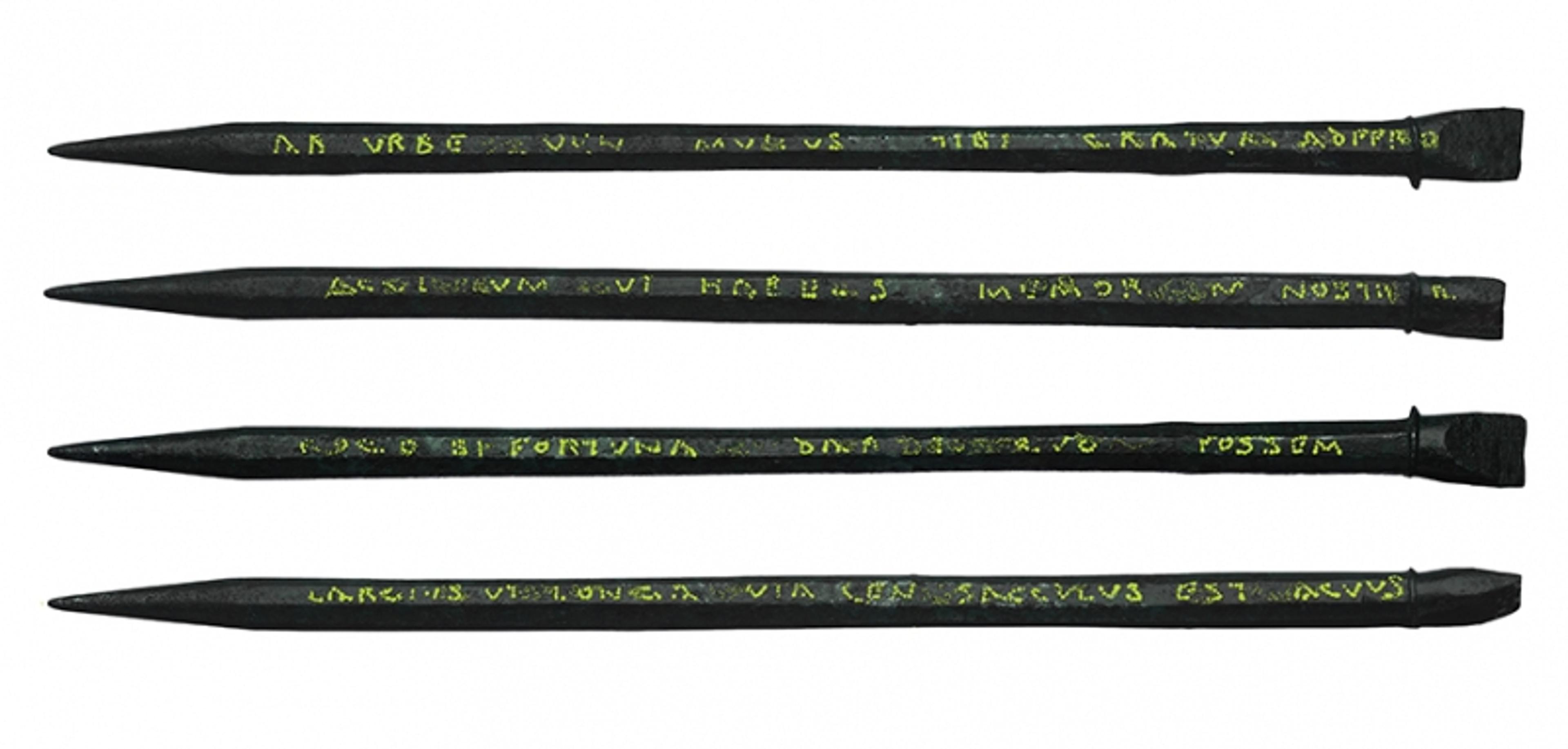
An iron stylus excavated in London in 2019. Courtesy the Museum of London Archaeology
An unexpected souvenir from Roman Britain drives home how deeply Roman souvenirs imbricated direct experience, vicarious memories and interpersonal relationships. The object, an iron stylus excavated in 2019 in London, is etched with this inscription, originally in Latin:
I have come from the City. I bring you a welcome gift
with a sharp point that you may remember me.
I ask, if fortune allowed, that I might be able (to give)
as generously as the way is long (and) as my purse is empty.
The inscription transforms an otherwise ordinary stylus into a souvenir of the Urbs, the proverbial big city: Rome. As archaeologists from the Museum of London Archaeology have put it, the stylus is ‘the Roman equivalent of “I went to Rome and all I got you was this pen”.’ However cheeky, the inscription attests to its author’s desire to bring a vicarious souvenir of Rome for a friend or loved one in London. The stylus would have reminded its owner of the person who gifted it, the giver’s trip to Rome and, perhaps, a more abstract idea of the city of Rome itself. And the souvenir’s movement from Italy to Britain was possible because of the land and maritime travel networks of the Roman Empire and the common coinage that allowed a traveller from Londinium (Roman London) to purchase goods in Rome itself. But its inscription and its status as a gift are idiosyncratic and intimate. As Jean Baudrillard argued in The System of Objects (1968), when we commit to an object by choosing to purchase it, this act of seeming ‘personalisation’ actually upholds ideological concepts of consumption that bind us to broader social systems. The London stylus’s inscription personalised it as an individualised gift but also integrated its giver and recipient into an imperial ideology at the centre of which lay Rome, the Big City.
The Tyche souvenirs allowed people to grasp, in a manner literal as well as figurative, the image of the goddess
We tend to think of souvenirs today as mass-produced and globalised, flattening them through a vocabulary of plastics and ‘Made in China’ labels that can elide their emotional appeal. Yet souvenirs can acquire great sentimental value, despite their mass-produced status. I own a ‘My boyfriend went to Jerusalem and all he got me was this lousy T-shirt’ T-shirt that my now-husband gifted me in 2007, when he travelled to Israel. I have yet to make it to Jerusalem myself, but this T-shirt still makes me smile. There are surely thousands of identical Jerusalem T-shirts floating around, but there is only one that my husband gave me, only one that calls to mind my husband’s Israeli adventure, my vicarious experience of it, and my relationship with my husband and his particular sense of gift-giving humour.
Archaeological evidence from antiquity confirms that souvenirs could hold extraordinary personal significance for Romans, who similarly invested themselves emotionally in their souvenirs. The Puteoli and Baiae flasks have been found in graves, homes, sanctuaries and public bathhouses. They could function as useful vessels and conversation pieces in domestic contexts, yet they also accrued enough affective value to be offered to the gods or taken to the afterlife.
Souvenirs of the Tyche of Antioch similarly could fulfil multiple practical and emotional roles. The bronze figurines, produced far from Syria, likely were not acquired as pilgrimage souvenirs from a visit to Antioch. While they could have been set up in lararia, or household shrines, they could as easily have been displayed as modest artistic replicas, the ancient equivalent of a poster of the Mona Lisa. The glass bottles in the shape of the Tyche probably contained perfume, but their fine preservation suggests they ultimately ended up in burials. In all instances, the Tyche souvenirs offered a vicarious experience of Eutychides’ statue and the city it personified, and allowed people to grasp, in a manner literal as well as figurative, the image of the goddess and her incorporation into spheres of leisure, travel and ritual.
Integrated into people’s lives through these practical affordances and emotional attachments, souvenirs did not simply reflect widely held perceptions of places and monuments. They constructed those perceptions. They broadcast that certain statues and cities were worthier of commemoration than others, that certain parts of a statue or buildings within a city were the appropriate recipients of special attention and fame, and that these landmarks could stand as shared cultural property around the Roman Empire.
Consider the Statue of Liberty today. In the absence of reproductions, Frédéric Auguste Bartholdi’s copper statue would, of course, stand materially in New York Harbor – but the Statue of Liberty as an idea, a symbol and an internationally recognisable landmark would not. The monument’s reproduction on posters, postcards, snow globes, figurines and T-shirts renders it iconic of New York and even the US. Eutychides’ bronze statue of Tyche would have existed in the absence of reproductions, but it would have been neither an internationally recognisable personification of Antioch nor a prestigious, sought-after artwork. The ‘original’ statues mean so much, and so widely, because of their souvenir reproductions.
It is not inevitable that we have come to visualise the Statue of Liberty when we think of New York (and vice versa) or that ancient Romans linked Antioch and Eutychides’ statue of Tyche. It is not even inevitable that people around the Roman Empire perceived Rome as the ultimate big city, rather than any number of the empire’s other large, cosmopolitan cities. We often take for granted that, as the post-antique saying goes, all roads lead to Rome, but it was objects such as the London stylus that fashioned Rome as the centre for people who likely would never voyage there and experience it in person. Souvenirs performed the work of transforming these stationary cities, buildings and statues into portable, widely recognisable landmarks.
Roman souvenirs were anything but marginal in the lives of their owners and in the imperial system in which those owners lived. They mediated the meanings of the artworks and monuments that still inform the grand histories of Rome. They force us to confront how the reproduction of places and monuments and the circulation of objects shape how we know the parts of our world that we never see in person – processes still in play today, albeit via different media and on different scales. One cannot look at the Roman material and still think that souvenirs only commemorate travel. They also prime expectations of sites that fuel tourism economies, direct tourist behaviour, and obscure the complex histories and present circumstances of many tourist sites. Souvenirs, whether a magnet of the Statue of Liberty or a bronze figurine of the Tyche of Antioch, may be small and inexpensive, but banal they are not. In our quest to understand how people, ancient and modern, imagine, know and make meaning of places, we cannot afford to overlook them.
